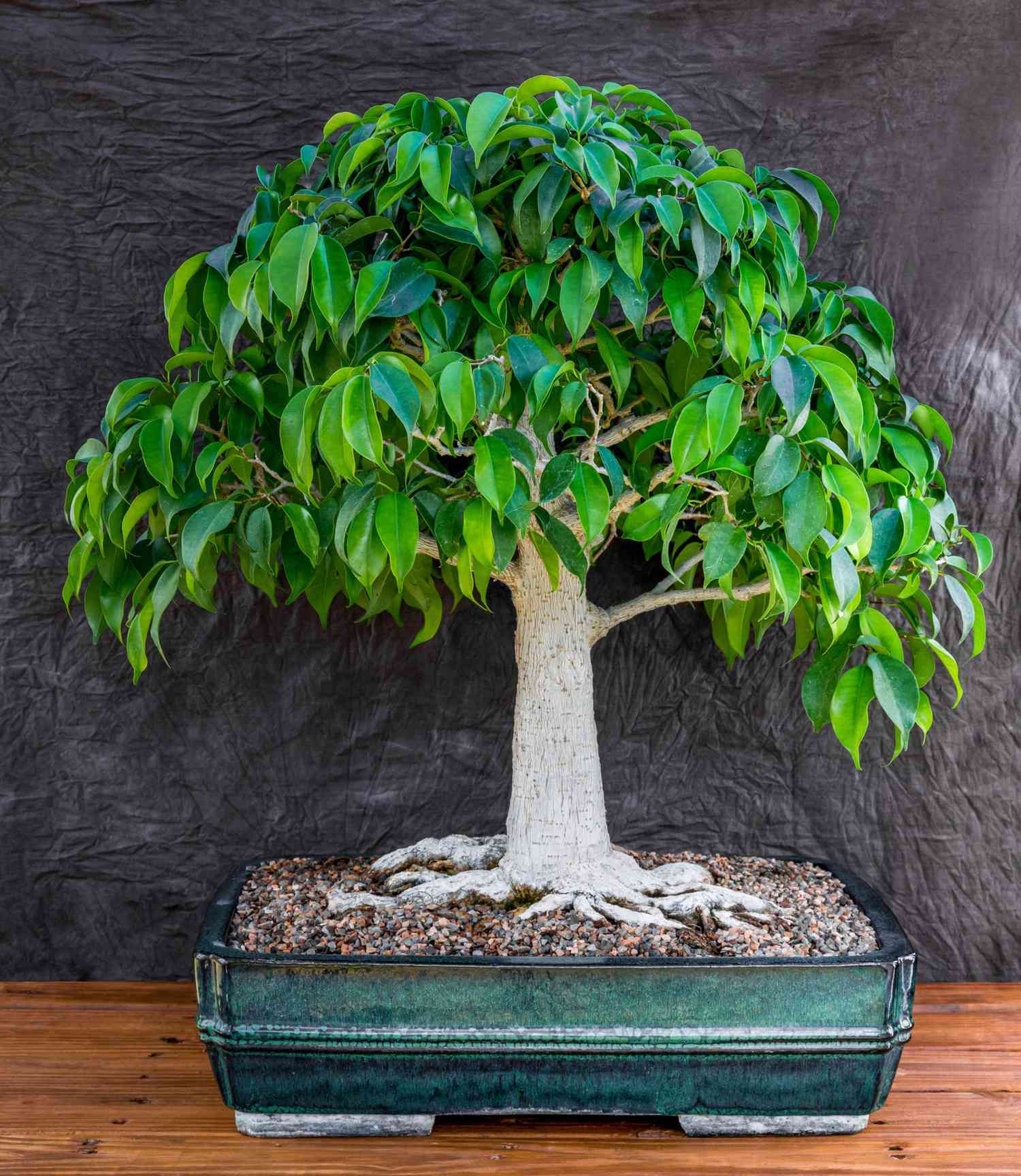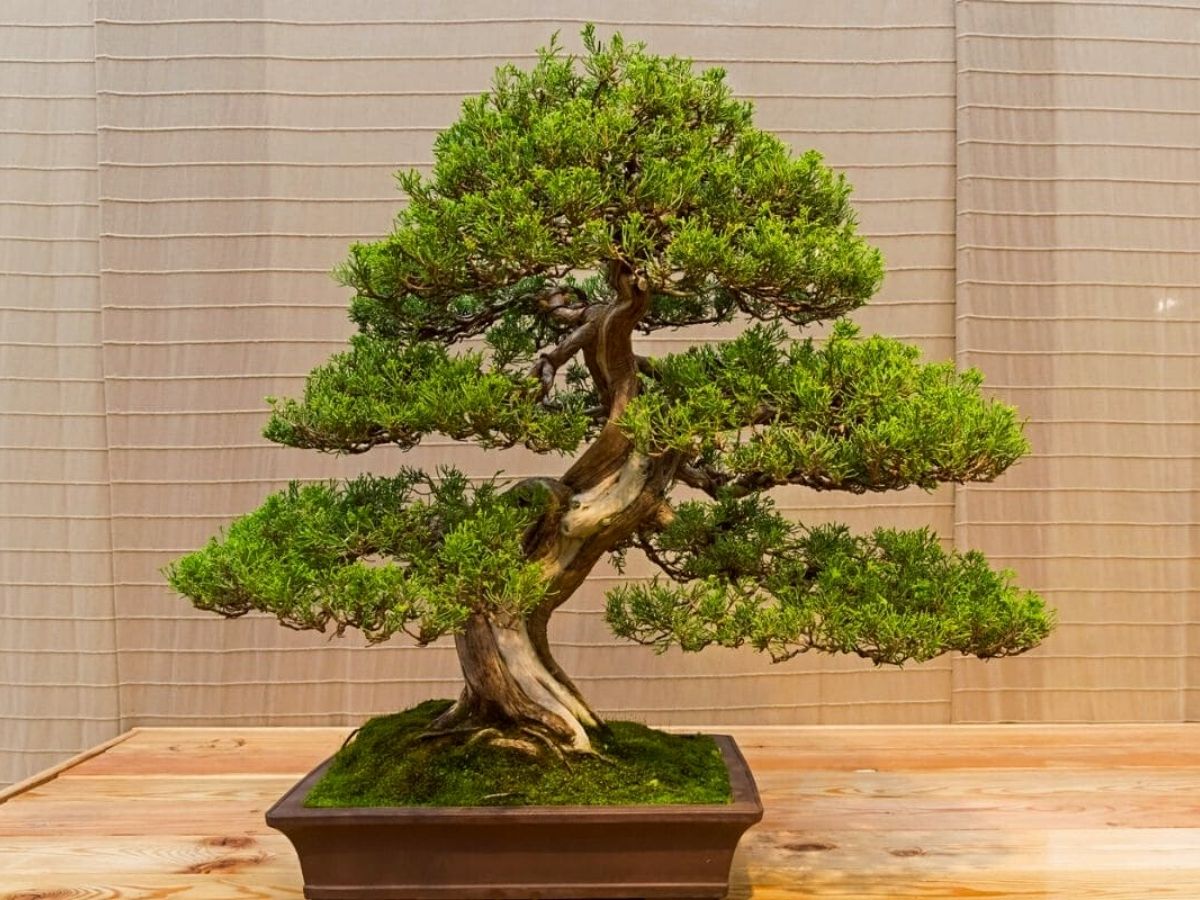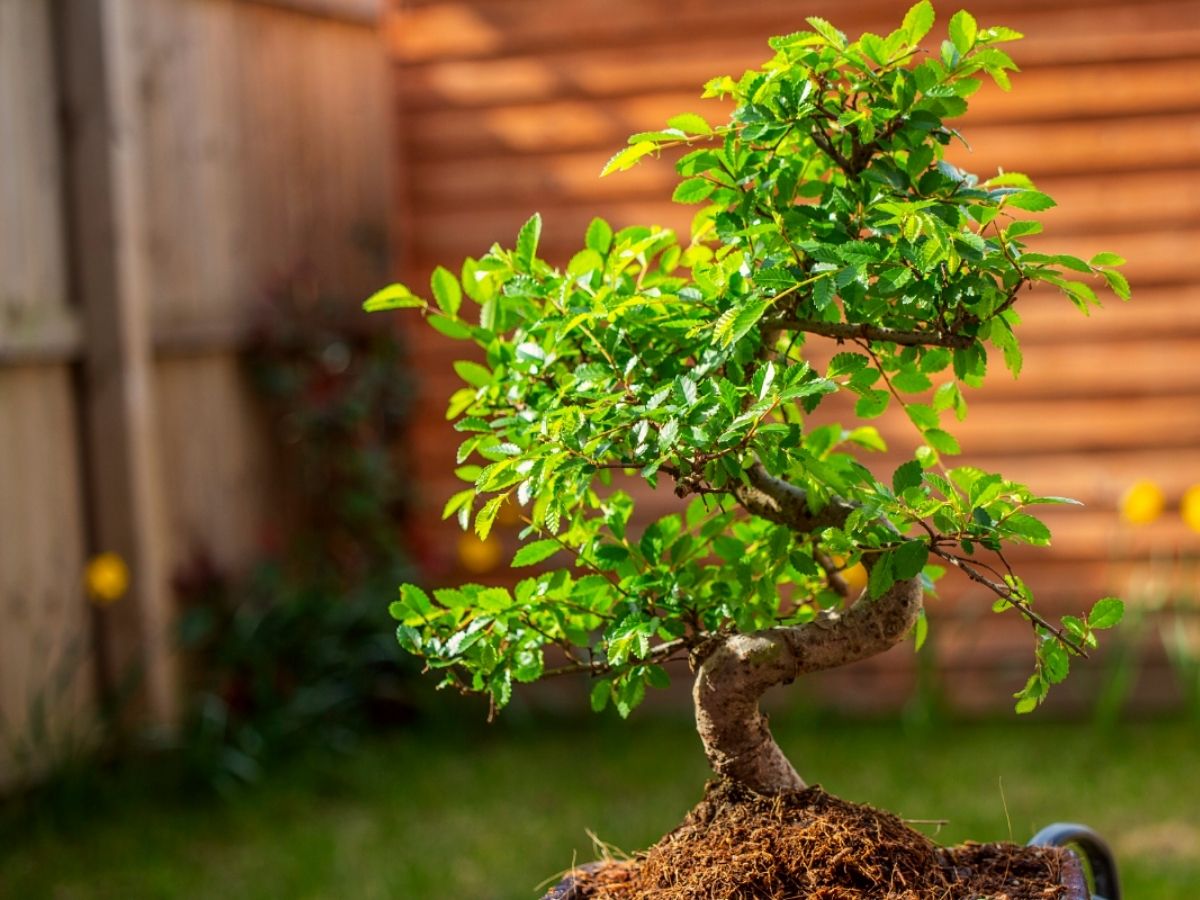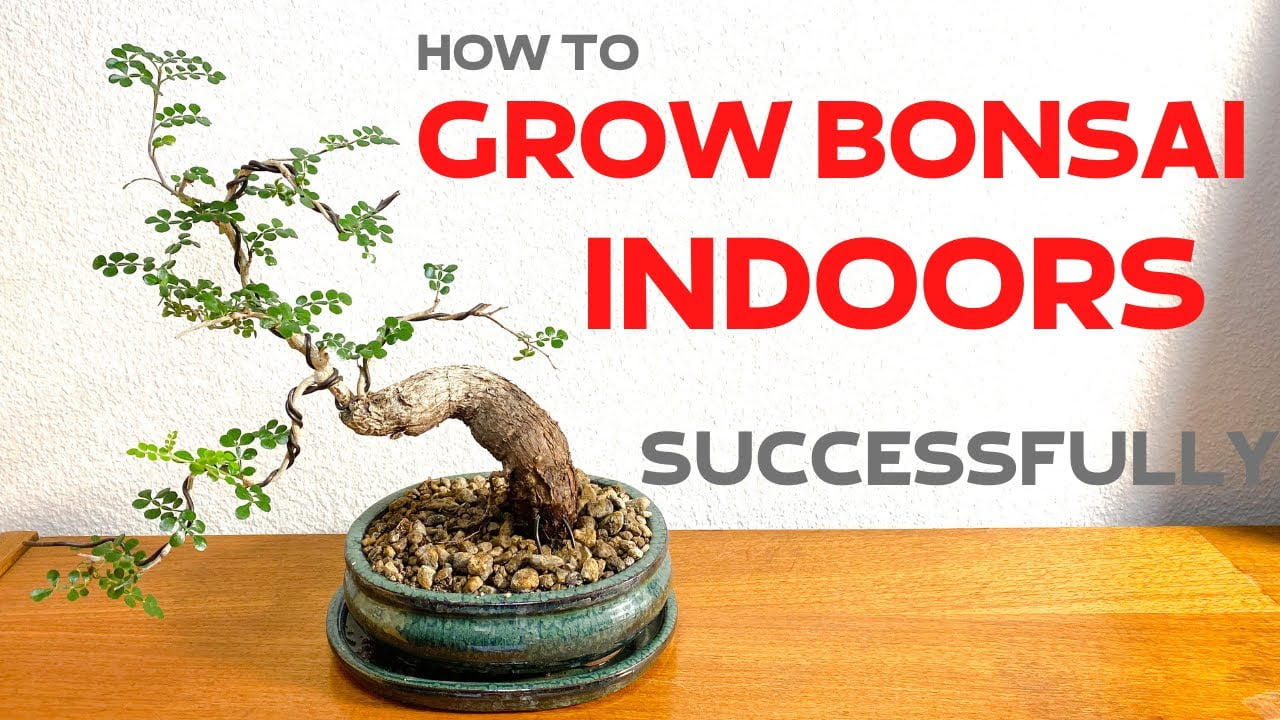We allow advertising on this website to support the blog. Some of content on this website was created with the help of AI.
So, you’ve decided to bring a little zen into your home and you’re thinking, “Hey, what better way to do that than with a bonsai tree?” Well, my friend, you’re in luck because I’ve got the inside scoop on the top indoor bonsai trees that will have your guests oohing and aahing with envy.
From the elegant Ficus Retusa, known for its twisted aerial roots, to the charming Juniper Bonsai, which adds a touch of nature to any room, there’s a bonsai tree for every style and skill level. So sit back, relax, and get ready to turn your living space into a tranquil oasis with these top indoor bonsai trees.
Indoor Bonsai Trees
If you’re looking to add a touch of nature to your home without the hassle of a full-sized tree, indoor bonsai trees are the way to go. These miniaturized wonders bring a sense of peace and tranquility to any space, and their unique shapes and styles make them a true delight to behold.
But with so many options out there, which bonsai tree should you choose? Fear not, dear reader, for we have compiled a list of the top indoor bonsai trees for your home. So sit back, relax, and prepare to embark on an adventure into the world of tiny trees!
Fig Tree Bonsai
Ah, the fig tree bonsai, a classic choice for any bonsai enthusiast. With its beautiful heart-shaped leaves and gnarled trunk, the fig tree bonsai is a true work of art. These trees are incredibly versatile and can thrive in both indoor and outdoor environments. However, if you’re looking to keep your fig tree bonsai indoors, there are a few things you should know.
Overview
Fig tree bonsai, also known as Ficus, belongs to the Moraceae family and is one of the most popular choices for indoor bonsai. They are known for their glossy leaves, interesting aerial roots, and their ability to adapt to different environments. The fig tree bonsai can grow to be quite large, so regular pruning is essential to maintain its miniature size.
Care Tips
To keep your fig tree bonsai healthy and happy, be sure to provide it with ample sunlight, preferably in a south-facing window. These trees prefer moist soil, so be sure to water them regularly, but be careful not to overwater as it can lead to root rot. Additionally, fig tree bonsai thrive in warmer temperatures, so keep them away from drafts or cold air.
Suitable Indoor Conditions
Indoor bonsai trees need a suitable environment to thrive, and the fig tree bonsai is no exception. They prefer humidity levels between 50-60% and temperatures between 60-75°F (15-24°C). If you live in a drier climate or your home has low humidity, you can use a humidity tray or mist the leaves regularly to provide the necessary moisture.
Pruning Techniques
Pruning is a crucial aspect of maintaining the shape and size of your fig tree bonsai. Regularly trim back new growth to maintain the desired shape, and remove any dead or unhealthy branches to promote new growth. Additionally, fig tree bonsai can be wired to achieve specific shapes, but be cautious not to damage the delicate branches.
Common Varieties
The most common variety of fig tree bonsai is the Ficus retusa, also known as the “Banyan Fig.” Other popular varieties include the Ficus microcarpa and the Ficus benjamina, both of which have their own unique characteristics and growth patterns.

Juniper Bonsai
If you’re in search of a bonsai tree that exudes elegance and grace, look no further than the Juniper bonsai. These stunning trees, with their delicate foliage and twisted trunks, bring a touch of zen to any space. Whether you’re a bonsai enthusiast or a beginner, the Juniper bonsai is a fantastic choice for your indoor garden.
Overview
Juniper bonsai, belonging to the Juniperus genus, are famous for their needle-like leaves and unique growth patterns. These trees are incredibly resilient and can withstand a wide range of temperatures and conditions, making them an ideal choice for indoor bonsai enthusiasts. Juniper bonsai trees are often considered symbols of longevity, strength, and protection.
Care Tips
To keep your Juniper bonsai thriving, it’s important to provide it with sufficient sunlight. These trees prefer bright, indirect light, so placing them near a sunny window is ideal. Junipers also prefer well-draining soil, so be sure to use a bonsai-specific soil mixture. Water your Juniper bonsai thoroughly when the top inch of soil feels dry, but avoid overwatering to prevent root rot.
Suitable Indoor Conditions
Juniper bonsai trees thrive in cooler temperatures and prefer humidity levels between 40-50%. They can tolerate temperatures as low as 30°F (-1°C) but should be kept away from extreme heat sources. If you live in a dry climate, using a humidity tray or misting the foliage regularly can help create a suitable environment for your Juniper bonsai.
Pruning Techniques
Pruning is an essential part of shaping and maintaining the health of your Juniper bonsai tree. Use sharp pruning shears to trim back long shoots and unwanted branches, and regularly pinch back new growth to maintain the desired shape. Wiring can also be used to guide the branches, but be cautious not to wire too tightly as it may damage the tree.
Common Varieties
The Juniperus procumbens, also known as the “Japanese Garden Juniper,” is the most popular variety of Juniper bonsai. Other common varieties include the Juniperus chinensis, which features unique foliage colors, and the Juniperus rigida, known for its rugged appearance.

Japanese Maple Bonsai
If you’re longing for a bonsai tree that adds a vibrant burst of color to your indoor space, the Japanese Maple bonsai is the perfect choice. With its stunning red or orange leaves and delicate branches, this miniature version of the iconic Japanese Maple tree is sure to captivate your senses.
Overview
Japanese Maple bonsai, scientifically known as Acer palmatum, belongs to the Sapindaceae family. These trees are famous for their stunning foliage, which showcases a wide range of vibrant colors throughout the seasons. In addition to their visual appeal, Japanese Maple bonsai trees symbolize wisdom, strength, and grace.
Care Tips
To keep your Japanese Maple bonsai healthy, it’s crucial to provide it with the right care. These trees prefer bright, indirect light, so placing them near a window with filtered sunlight is ideal. Japanese Maples also require consistent moisture, so be sure to water them regularly and avoid letting the soil dry out completely.
Suitable Indoor Conditions
Indoor Japanese Maple bonsai trees thrive in cooler temperatures, ideally between 50-70°F (10-21°C). They prefer humidity levels around 50%, so misting the foliage regularly or using a humidity tray can help create a suitable environment. Avoid placing your bonsai near drafty windows or heat sources, as extreme temperatures can harm the tree.
Pruning Techniques
Pruning is essential for the health and aesthetics of your Japanese Maple bonsai. Regularly remove any dead or diseased branches, and prune back new growth to maintain the desired shape and size. Additionally, wiring can be used to enhance the tree’s unique trunk and branch structure, but it should be done carefully to avoid damaging the delicate branches.
Common Varieties
There are numerous Japanese Maple varieties to choose from, each with its own unique leaf shape, color, and size. Some popular varieties for bonsai include the “Bloodgood,” which displays deep red foliage, and the “Seiryu,” which features finely dissected leaves and an upright growth habit.

Ficus Bonsai
Looking for a low-maintenance yet visually stunning indoor bonsai tree? The Ficus bonsai might just be the perfect fit. With its glossy leaves and distinctive aerial roots, this bonsai tree adds a touch of tropical beauty to any space. Whether you’re a seasoned bonsai enthusiast or just starting your bonsai journey, the Ficus bonsai is a foolproof choice.
Overview
Ficus bonsai trees belong to the Ficus genus and are native to tropical and subtropical regions. These trees are known for their glossy, vibrant green leaves and their ability to adapt well to indoor environments. Ficus bonsai trees are often appreciated for their striking aerial roots, which create a unique and exotic appearance.
Care Tips
To keep your Ficus bonsai healthy, provide it with bright, indirect light. These trees prefer temperatures between 60-75°F (15-24°C), so placing them near a sunny window is generally a good idea. Ficus bonsai trees require regular watering, so check the soil moisture daily and water when the top inch feels dry. However, be cautious not to overwater, as this can lead to root rot.
Suitable Indoor Conditions
Ficus bonsai trees thrive in warm and humid environments. They prefer humidity levels between 40-60% and should be kept away from drafts or cold air. If you live in a dry climate or your home has low humidity, using a humidity tray or placing the bonsai pot on a pebble tray filled with water can help create a suitable environment.
Pruning Techniques
Pruning is vital for maintaining the shape and health of your Ficus bonsai tree. Regularly trim back new growth to maintain the desired size and shape, and remove any dead or unhealthy branches to encourage new growth. Wiring can also be used to guide the branches, but be careful not to wire too tightly, as it may damage the tree.
Common Varieties
The most common variety of Ficus bonsai is the Ficus benjamina, also known as the “Weeping Fig.” Other popular varieties include the Ficus retusa, which showcases a more compact growth habit, and the Ficus microcarpa, known for its aerial root system.

Chinese Elm Bonsai
If you’re seeking a bonsai tree that embodies both elegance and resilience, the Chinese Elm bonsai is an excellent choice. With its delicate leaves and graceful appearance, this tree brings a sense of serenity to any indoor space. Whether you’re a bonsai enthusiast or a beginner, the Chinese Elm bonsai is sure to captivate your heart.
Overview
Chinese Elm bonsai, scientifically known as Ulmus parvifolia, is a popular choice for both indoor and outdoor bonsai. These trees are native to East Asia and are well-known for their small, serrated leaves and intricate trunk structure. Chinese Elm bonsai trees are highly adaptable and can tolerate a wide range of growing conditions.
Care Tips
Chinese Elm bonsai trees prefer bright, indirect light, but they can also tolerate lower light conditions. Place your bonsai near a window that receives filtered sunlight throughout the day. These trees prefer well-draining soil, so be sure to use a bonsai-specific soil mixture. Water your Chinese Elm bonsai thoroughly when the top inch of soil feels dry, but beware of overwatering, as it can lead to root rot.
Suitable Indoor Conditions
Chinese Elm bonsai trees prefer moderate temperatures between 60-80°F (15-27°C) and humidity levels around 50%. They can tolerate slightly lower temperatures during winter dormancy, but prolonged exposure to extreme cold may harm the tree. To increase humidity levels, mist the foliage regularly, use a humidity tray, or place the bonsai pot on a pebble tray filled with water.
Pruning Techniques
Pruning is essential for maintaining the shape and overall health of your Chinese Elm bonsai. Regularly trim back new growth to maintain the desired size and shape, and remove any dead or unhealthy branches to promote new growth. Wiring can also be used to guide the branches, but be gentle to avoid damaging the delicate branches.
Common Varieties
The most common variety of Chinese Elm bonsai is the Ulmus parvifolia “Bonsai,” which is specifically cultivated for its miniature size and unique characteristics. However, there are other Chinese Elm species, such as the Ulmus parvifolia “Catlin” and the Ulmus parvifolia “Jacqueline Hillier,” that are also suitable for bonsai cultivation.




